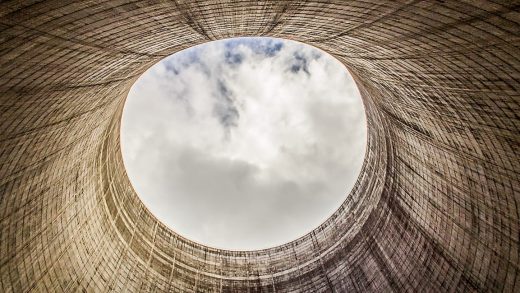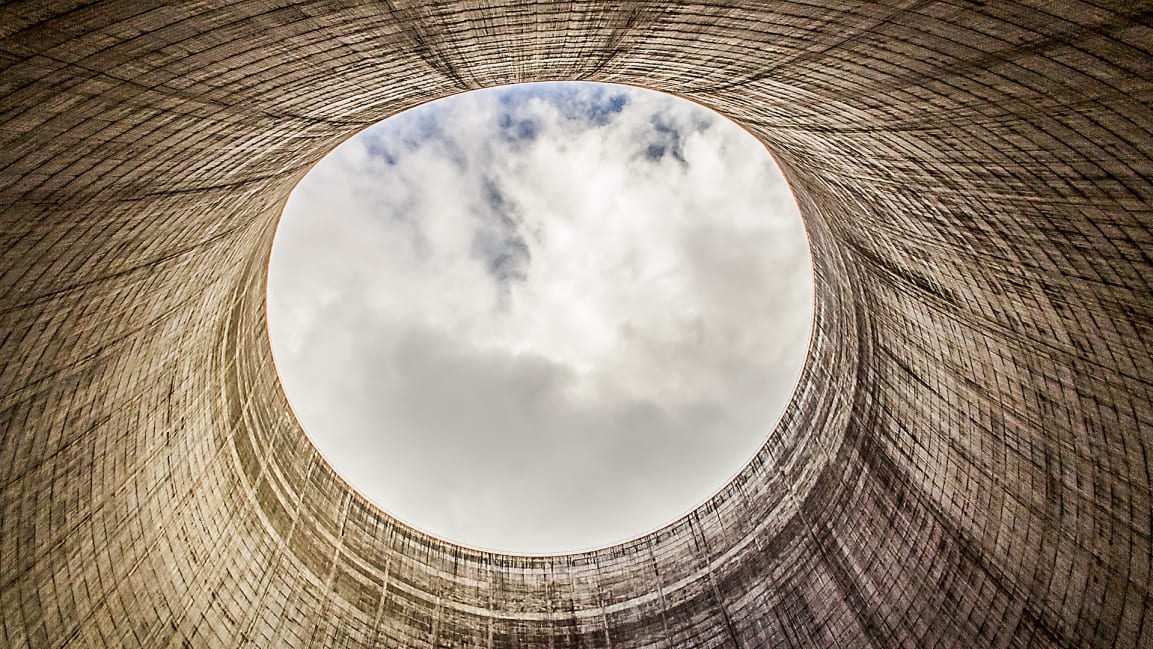This startup uses the cooling towers on buildings as carbon capture devices
On top of a nondescript industrial building in the Bay Area city of San Leandro, a company is pioneering a new way to fight climate change: Hacking a cooling tower—the equipment used for air conditioning in large buildings—to help pull CO2 from the atmosphere. So-called direct air capture machines are already in use elsewhere. But they’re expensive to build and run. And by combining the technology with an existing cooling tower, the startup, called Noya, is working to make it more affordable so it can grow faster.
Cofounder and CEO Josh Santos, previously a project manager for electric vehicles at Tesla and Harley Davidson, started working on the technology with his roommate after conversations about climate change. “We just asked ourselves one day, the climate problem is caused by there being too much CO2 in the sky, so… can we just pull it out, and process it out of the sky? We started looking into this and trying to understand why people weren’t doing this at scale. And what we found was that we’ve had the technology to capture CO2 from the sky since the 1930s. But we haven’t been able to do it cheaply enough, and we haven’t been able to do it quickly.”
Direct air capture plants are typically massive and expensive. One under development in Texas, designed to eventually capture a million metric tons of CO2 a year, likely will cost hundreds of millions of dollars to build. Santos and cofounder Daniel Cavero, his former roommate, started thinking about how to reduce the cost. They eventually realized that cooling towers could be part of the solution. The devices already use fans to pull in outside air, just like typical direct air capture machines.
“Cooling towers are basically big boxes that have a fan on top of them that pulls in air from the ambient environment,” says Santos. Inside, the devices use water as part of the process of cooling. The company adds chemicals to the water, which allows it to soak up carbon from the air in the system. Since the fans, pumps, and other parts of the cooling tower are already running, combining the processes helps save energy. The CO2 is stored onsite, and additional equipment pressurizes the gas so it can be taken elsewhere and sold.
The startup is partnering with companies that operate their own cooling towers. The first, in San Leandro, is the creamery for a regenerative dairy. Companies pay nothing to participate; Noya pays for the cost of installation and the cost of the equipment, along with any incidental operating costs that the process might add to the building. The startup also manages collection of the CO2 and selling it, giving a small percentage of the proceeds back to the building owner. “We tried to make this as easy as possible for companies to work with us, because the fact of the matter is that we need to be pulling as much CO2 down from the sky as possible,” Santos says.
At scale, he says, the company expects to be able to capture CO2 for less than $100 a ton, which is the price target the rest of the direct air capture is aiming for. (In 2019, another direct air capture company said that at its current costs, the price was around $500-$600 a ton.) Planting trees, unsurprisingly, is a much cheaper way to capture carbon from the air. But because of the huge scale of carbon capture that’s necessary and because relying on trees has risks, like the fact that trees can burn in forest fires, technological solutions will be necessary along with nature-based solutions.
There are around 2 million cooling towers in the U.S., making it possible to build a huge network of carbon capture devices. The startup plans to begin with the Bay Area, and set up a system that sells the CO2 to local breweries, bars, and restaurants to carbonate drinks. That carbon still gets released into the atmosphere, though, so ultimately, it plans to sell to companies that can capture the carbon more permanently, like concrete companies that can embed CO2 in their product. If it can eventually work with every cooling tower in the country, the team has calculated that it could capture 10 billion tons of CO2 each year, as much as some scientists predict will be needed to be removed by the middle of the century.
(49)



